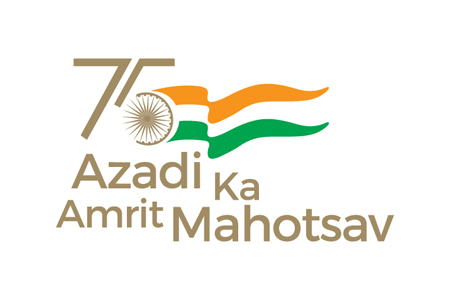Project Title
Neuralplasticity-based Sensory-Rehabilitation Protocol in Post-Stroke Hemiparesis
(ICMR funded Project: 2019 -2022)
Introduction
In addition to motor paresis, sensory impairments impacting recovery are also common after stroke; however, they are usually not focused on.
Objective
The objective of the study was to determine the effectiveness of a novel sensory rehabilitation protocol on motor and sensory recoveries, and the disability status of post-stroke hemiparetic subjects.
Methodology
Design: Randomized controlled, assessor-blinded trial
Setting: Rehabilitation Institute
Inclusion Criteria: Age: 20 to 80 years, Hemiparesis (right or left), Ischemic or hemorrhagic stroke, 1 to 12 months after the stroke onset, Impaired sensations.
Exclusion criteria: Receptive communication, Contractures of hand, Complex regional pain syndrome, Severe cognitive deficit, Diabetic or other neuropathy
Sample size: 122 (61 subjects in each arm)
Intervention: Experimental: NEuroplasticity-Principles-based SEnsory-Rehabilitation (NEPSER) protocol comprising active, repetitive, and meaningful training utilizing visuo-perceptual, cognitive, motor, and functional tasks; 40 sessions, each of 2 hours. Control: standard rehabilitation.
Outcome Measure: Fugl-Meyer Assessment – Upper arm (FMA-UA), Nottingham Sensory Assessment (Erasmus modification) (Em-NSA), NSA-Stereognosis, and Modified Rankin scale (mRS).
Results
Post intervention, the FMA-UA, Em-NSA, and NSA-Stereognosis favorably changed to 24.64±6.94, 36.75±3.33, and 16.30±4.89, respectively, in the experimental group while the same progressed to 21.18±8.90, 21.64±11.36, and 9.93±7.97, respectively, among control group participants. The changes were significantly different (95% CI 0.092 – 6.14, 7.84 – 14.40, and 1.89 – 6.89; p= 0.044, < 0.001, 0.001, respectively) between the groups at follow-up. There were 34 (55.7%) and 40 (65.6%) subjects (pre-intervention), and 45 (73.8%) and 46 (75.4%) subjects (post-intervention) at < mRS-3 stage in the experimental and control groups, respectively (p = 0.878).
Conclusion
This study led to the development of a novel rehabilitation protocol for managing sensory-motor deficits in stroke. The protocol not only enhanced sensory recovery but also motor recovery, which may impact stroke disability.
2019-20
Projects Completed
- Dr. Meenakshi Batra as the principal investigator for the project titled “Identifying and modulating the establishment of laterality in children with developmental disabilities”.
Completed Research Project (2016-17)
| Project | Description |
|---|---|
| 1. Synergy-based motor therapy program for Stroke patients (July 2015 to September 2016).
2. Principal Investigator – Ms. Shanta Pandian, Lecturer OT |
Synergy, working together of muscles in a coordinated fashion, is a normal neurophysiological mechanism. Abnormal stereotyped motor behavior appears in post-stroke hemiparesis patients. Facilitation of normal synergy and dissociation of abnormal synergy may influence motor recovery. The application of the synergy concept in stroke rehabilitation is sparse. Setting: Rehabilitation Institute Participants: 50 (29 males, 40 to 60 years, 28 ischemic) chronic poststroke hemiparetic subjects Design: Pretest posttest single group, Phase I trial Interventions: Considering the relation between normal and abnormal synergies, a motor therapy protocol using various tasks/activities was developed. Synergistic movements were selected based on quality, quantity, and association of the available movements. For example, shoulder external rotation with elbow extension was utilized to dissociate strong elbow flexion. Outcome measures: Fugl-Meyer Assessment (Upper Extremity) (FMA-UE) to assess voluntary motor control, mRS scale, and Barthel Index to measure the functional use of the upper limb. Results: The motor rehabilitation protocol using the synergy concept was feasible among all participants and across all stages of motor recovery. Post-intervention subjects exhibited significant (p=0.02) change on FMA-UE (37.75+ 16.93 to 42.5+19.37). Conclusion: Synergy-based motor rehabilitation is beneficial in improving motor and functional recovery in stroke patients. The utilization of synergistic linkage should be explored in stroke rehabilitation. Publication/presentation: |
| 4. Interlimb coupling in post-stroke rehabilitation (December 2015 to November 2016). 5. Principal Investigator – Dr. Kamal Narayan Arya, Lecturer (OT) Funded by Indian Council of Medical Research, New Delhi |
In India, stroke incidence has been registering an upward trend in recent decades. Disability due to motor impairment of the limbs is the most common and challenging manifestation of stroke. Interlimb coordination, a relative timing of events between the four limbs during functional performance, gets hampered after stroke. Despite motor recovery, post-stroke hemiparetic subjects are unable to use their limbs efficiently in daily tasks, increasing their disability level. There is a neural cross-talk between the two brain hemispheres that modulates task-specific actions, leading to complex intra- & interlimb joint interactions. The concept can be explored and utilized in stroke rehabilitation. The intervention based on interlimb coordination and coupling principles was found feasible for stroke subjects. The regime comprises movements of either upper limbs or lower limbs or all four limbs using various therapeutic devices. The movements may be provided in various combinations of the upper and lower limbs, such as bilateral, ipsilateral, contralateral, symmetrical, and asymmetrical. In a randomized controlled trial on 50 subjects, the interlimb coupling program exhibited significant improvement in motor recovery of the upper and lower limbs as measured by Fugl-Meyer assessment [p< 0.001; 95% CI mean of difference = 8.83 (7.60 – 10.06)]. The gait deviation on Rivermead Visual Gait Assessment reduced significantly [p< 0.001; 95% CI of mean difference = 6.32 (7.51 – 5.13)]. 50% of the experimental subjects reached the highest level of functional ambulation. 15% of experimental participants demonstrated a considerable change in disability level (Modified Rankin scale 2 from stage 3 or 4) compared to controls. In summary, interlimb coupling-based stroke rehabilitation may enhance motor recovery and functional ambulation while reducing gait deviation and disability level. The concept may be incorporated into post-stroke management. Publications/Presentations: |
Further research projects and details can be provided upon request.



